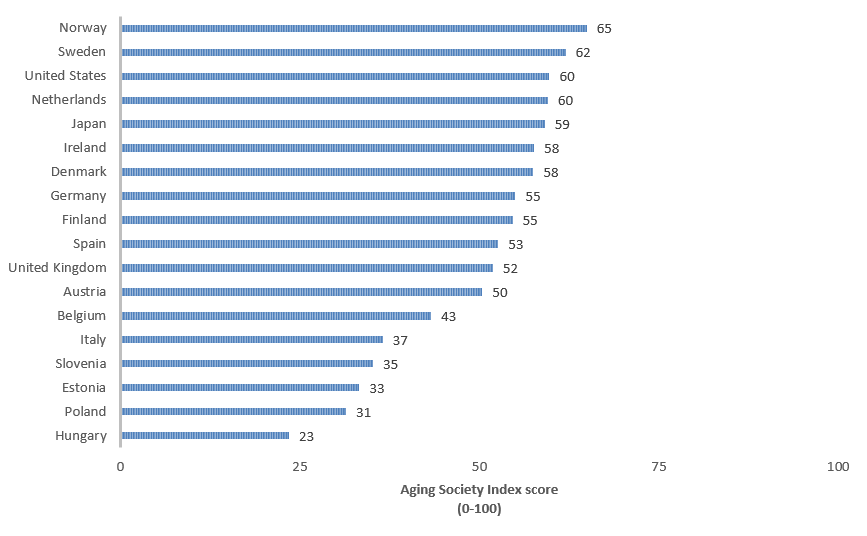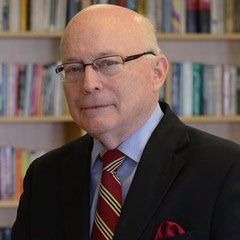In the United States, life expectancy at birth has increased by more than 30 years since 1900. This enhanced longevity, when complicated by the post-World War II baby boom, has rapidly converted the country into an aging society, one in which the number of individuals over age 60 exceeds those under age 15. As a society, the United States is ill prepared to cope with this dramatic “age wave.” The simple fact is that the core institutions of our society – education, work, retirement, health-care, and the like – were not designed to support a society with our future age distribution.
In 2008, the MacArthur Foundation assembled an interdisciplinary group of scholars, the MacArthur Foundation Research Network on an Aging Society, to explore the challenges and opportunities posed by our societal aging. The 14-member group represented several relevant disciplines, including demography, sociology, psychology, economics, epidemiology, public policy, political science, and public health.
Defining a Successfully Aging Society
Following several years of research and holding conferences and smaller group discussions, the Network established a definition of a successfully aging society, which included five central domains, all of which are sensitive to changes in public policies. The domains are:
- Productivity: The future roles of older individuals in society will have a dramatic impact on the likelihood that the United States will be productive. This includes issues related to maintaining older persons in the workforce and civic life (for example, through volunteerism), both of which enhance well-being and yield significant societal benefits.
- Well-being: Well-being is dependent on not only access to high quality, geriatrically sophisticated healthcare, but also on the many important social and behavioral determinants of care. A successfully aging society is one that provides the context to facilitate physical and mental health, as reflected in disability free life expectancy and other measures.
- Cohesion: This domain has to do with the capacity of the family unit to act as a safety net for the aging person, providing for a variety of financial, social, and health-related needs. In today’s society, cohesion is threatened by the growing array of family "forms" that have different capacities for support (e.g., childlessness), geographic dispersion, and economic challenges.
- Security: In this domain we include both financial security, which is of course critical to successful aging, and physical security, including a sense of being safe in one’s physical environment.
- Equity: For the Network, a key component of a society that has adapted well to aging is the relatively equitable distribution of resources among older persons as a cohort as well as between older persons and younger groups.
A discussion with Dr. John Rowe, April 7, 2010, Spertus Museum Auditorium, Chicago, IL
The Aging Society Index: Comparing the United States to other Developed Countries
Using the definition of a successfully aging society outlined above, the Network developed an Index as a measure of how well a society is adapting to its aging population and computed scores for the United States and many other countries.
It is important to be mindful that countries in Western Europe aged ahead of this country, reflecting their post-World War II baby bust and sustained reductions in total fertility below the replacement rate, while the U.S. baby boom and higher fertility rates have combined to delay the emergence of an aging society by a couple of decades.

Ranking of countries according to their level of adaptation for successful aging based on their Aging Society Index scores.
The U.S. does well overall. We lead in keeping seniors productively engaged, but lag behind in several areas, such as equity and security. Regarding life expectancy and well-being, we are in the middle of the pack. The Nordic countries are especially strong in social support, and Spain has embarked on some innovative pension reform.
Aging societies are inevitable, but they can be a sign of success not failure. Countries such as the United States have time to adapt, and we can learn important lessons from other societies, especially with suitable metrics. Failure to adapt will leave Americans with lower productivity, reduced well-being, and financial insecurity in an environment of increased tensions between generations as they vie for limited resources.
From 2007 to 2017, the MacArthur Foundation Research Network on an Aging Society explored how major societal institutions, including retirement, housing and labor markets, government and families, will have to change to support the emergence of a productive, equitable aging society. Its work was informed by the Research Network on Successful Aging (1985 to 1996), which offered a new perspective on adult development and aging, discovering and studying the factors that enable people to maintain good mental and physical functioning into old age.That work led to the best-selling book, Successful Aging, which has been influential in both public and academic spheres. Overall, MacArthur invested $22.7 million in researching and better understanding the policy implications of our aging society.
A series of discussions on the implications of our aging society with Lisa Berkman, Linda Fried, James Jackson, and Dr. John Rowe.
Related Content
Understanding Successful Aging of Societies(Spring 2015 issues of Daedalus) ›




